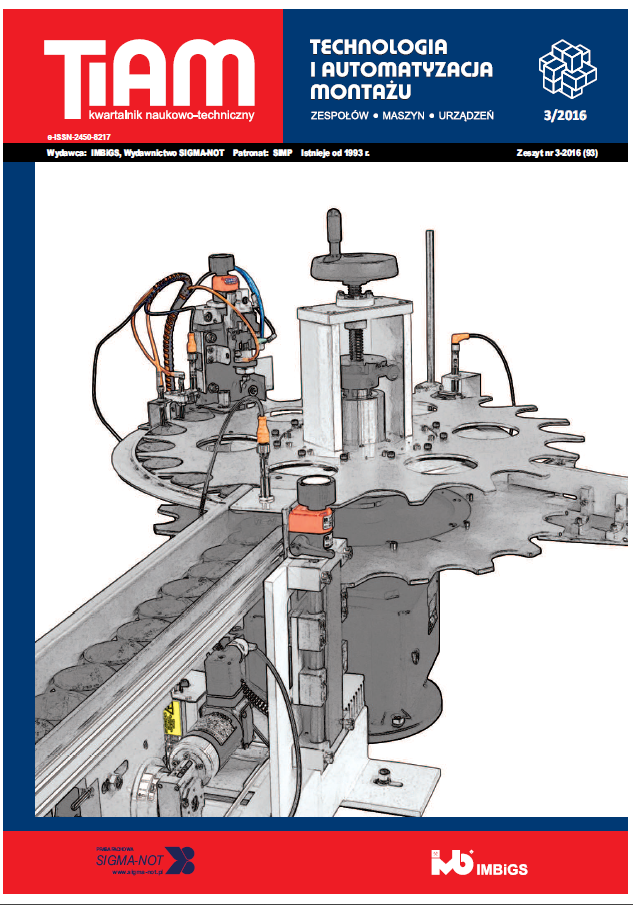Abstract
The article presents an analysis of the ability of wetting the surface layer of material with a specific energy state by the adhesive with known energy properties. On the basis of the results wetting envelopes were determined, which present the maximum values of the components of surface free energy of the liquid ensuring a good wetting. The study also analyzes possibility of achieving maximum work of adhesion between the solid and liquid in the case of changes in the contact angle. This analysis allows to determine how the parameters of the tested adhesive deviate from the ideal, meaning those for which the surface tension at the interface reaches a minimum value. Based on the obtained results, it was found that knowledge of the energy state of the surface layer and the surface free energy of the adhesive composition allows to quickly analyze the correctness of the choice of adhesive for connecting the materials in order to obtain optimum adhesion properties.
This is an Open Access article distributed under the terms of the Creative Commons Attribution License CC BY 4.0 (https://creativecommons.org/licenses/by/4.0/)
References
Chomiak M., J. Stabik. 2014. „Badania kąta zwilżania napełniaczy węglowych żywicami epoksydowymi”. Przetwórstwo Tworzyw (2): 174–181.
Ciecińska B., R. Perłowski. 2013. „Swobodna energia powierzchniowa wybranych materiałów lotniczych po obróbce laserowej”. Technologia i Automatyzacja Montażu (1): 56–62.
Domińczuk J., A. Serwin. 2014. „Analiza stanu energetycznego warstwy wierzchniej stali OH18N9T i poliamidu PA6 po wybranych sposobach przygotowania powierzchni do klejenia”. Technologia i Automatyzacja Montażu (4): 42–46.
Domińczuk J. 2011. „Właściwości adhezyjne warstwy wierzchniej materiałów konstrukcyjnych”. Postęp Nauki i Techniki (9): 28–37.
Domińczuk J. 2012. „Wpływ stanu energetycznego warstwy wierzchniej na wytrzymałość połączenia adhezyjnego”. Postępy Nauki i Techniki (13): 30–36.
Janssena D. et. al. 2006. “Static solvent contact angle measurements, surface free energy and wettability determination of various self-assembled monolayers on silicon dioxide”. Thin Solid Films (4): 1433–1438.
Kłonica M., J. Kuczmaszewski. 2012. „Wpływ stężenia ozonu na stan energetyczny warstwy wierzchniej stopu tytanu Ti-6Al-4V”. Inżynieria Materiałowa (4): 328–332.
Krawczuk A., J. Domińczuk. 2015. „Analiza możliwości wykorzystania krzywych zwilżania do optymalizacji procesów adhezyjnych”. Technologia i Automatyzacja Montażu (4): 43–47.
Kuczmaszewski J. 2006. “Fundamentals of metal- metal adhesive joint design”. Lublin University of Technology: Polish Academy of Sciences. Lublin Branch.
Mirski Z., T. Piwowarczyk. 2008. „Podstawy klejenia, kleje i ich właściwości”. Przegląd Spawalnictwa (8): 12–21.
Żenkiewicz M. 2007. „Analiza głównych metod badania swobodnej energii powierzchniowej materiałów polimerowych”. Polimery (52): 760–767.

